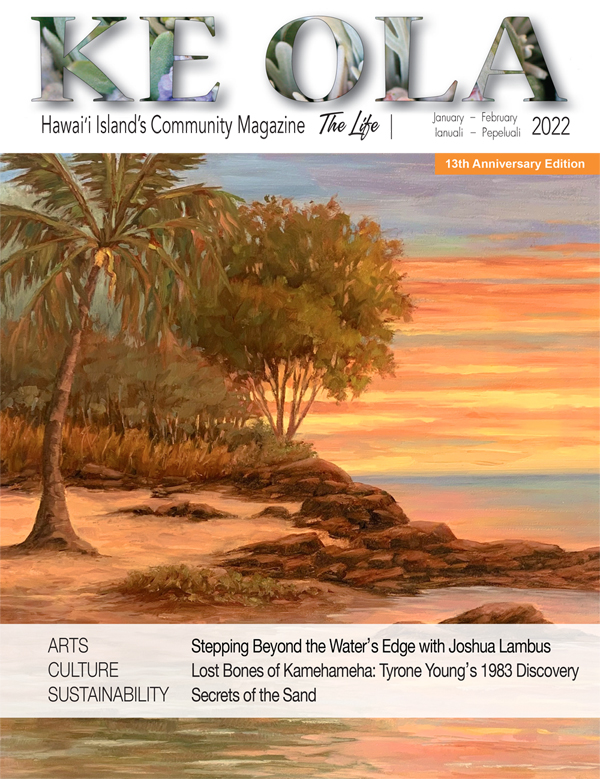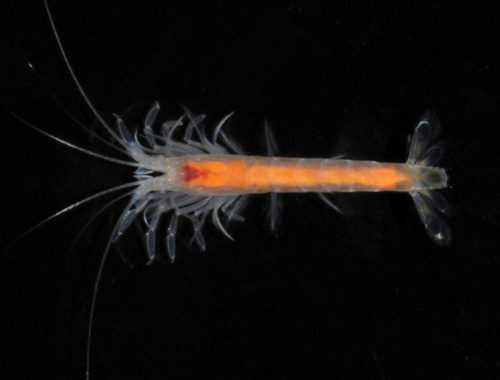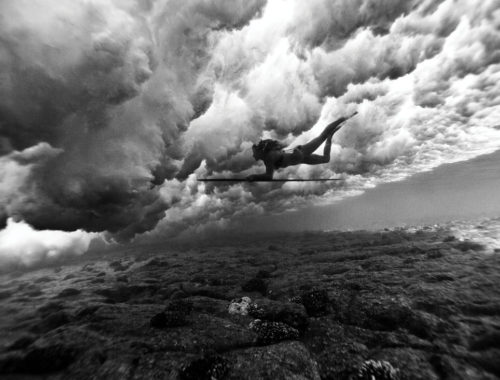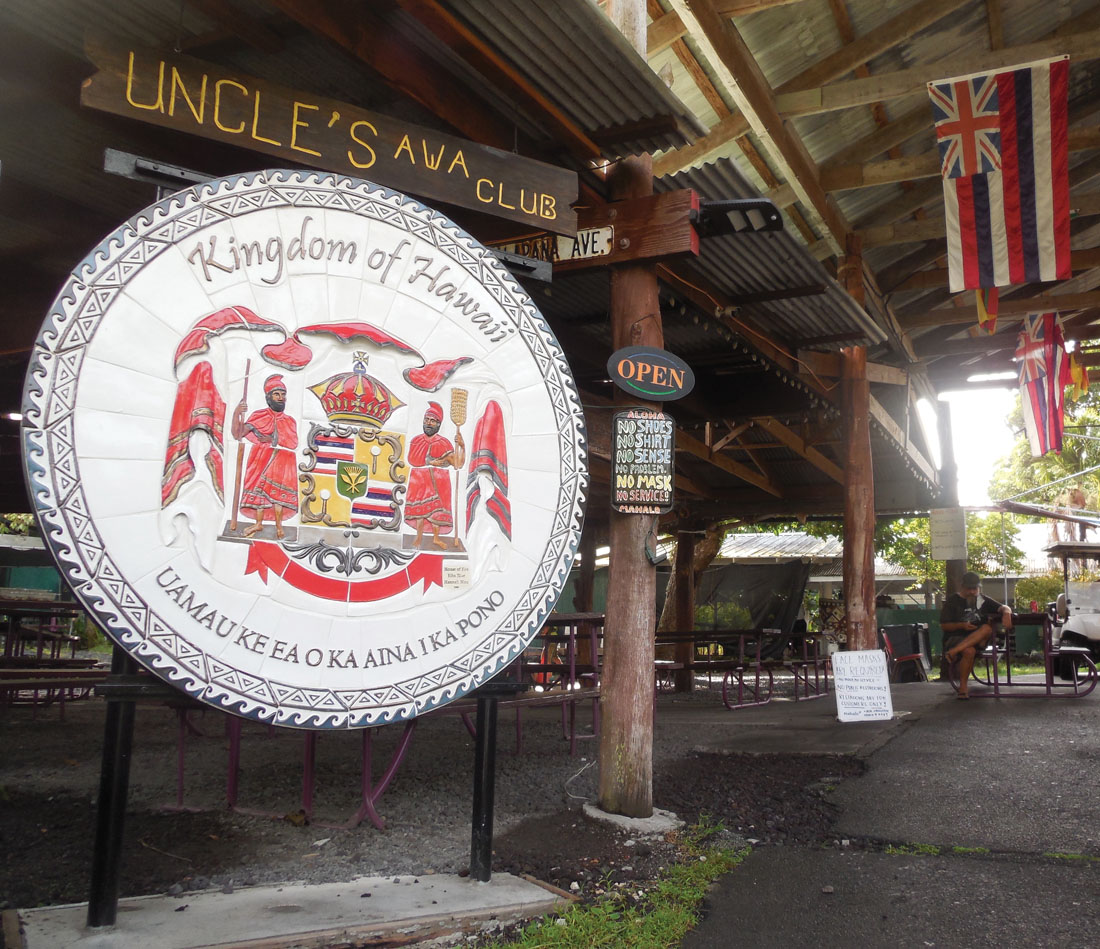
Hawaiian Kingdom Lives on at Uncle Robert’s Awa Bar

By Stefan Verbano
Big Polynesian hands hoisted the massive tile “puzzlepiece” mural upright at last, and Rika Blue took a step back to admire her creation for the first time in its rightful place.
This moment was the vindication of years’ worth of work for Rika: countless hours spent rolling out and cutting the clay pieces, carving three-dimensional motifs into them, glazing, firing, epoxying, grouting, and sealing, all at her pottery studio next door to the sprawling open-air market complex known as “Uncle Robert’s” in the village of Kalapana. It’s here, at the market’s main entrance, that the imposing six-foot-tall ceramic disk emblazoned with the Kingdom of Hawai‘i’s Royal Crest was to be unveiled.
Robert Keli‘iho‘omalu, Sr.—the late, beloved patriarch of old Kalapana Village—is the market’s namesake, whose children now run its day-to-day operations. It was friends and relatives of the Keli‘iho‘omalu family who heaved the mural into place in mid-March 2021, dead-lifting what Rika estimates to have been between 300 and 500 pounds, bracing it upright with their bodies against the heavy-duty, custom-built metal frame cemented into the ground while a welding torch hissed and sparked away on the opposite side.
“We were all just standing around cheering them on,” Rika, interviewed later, says of those anxious moments before the unwieldy art piece was secured. “We just kept shouting, ‘Hold on!’”
When it was finally deemed safe to let go, the burly men released their grip cautiously, and a semicircle of admirers formed, finally taking in the full spectacle of the piece’s colors and textures.
“It looked so different hanging up there,” the artist says. “It was great, you finally got to see it correctly, because I had been looking at it laying flat all that time. To see it mounted upright, it just all came together so pretty that day when it was finally done, and it was like, ‘There it is!’” Rika adds, “It was a momentous day for me.”
Since then, the mural has towered over marketgoers, deliberately situated at the crossroads of the many intersecting routes that lead to the complex’s different areas: the road to the main entrance, the trail to Kaimū Beach, the street connecting the grocery store next door, and the footpaths to Uncle’s Corner Pocket restaurant and its nearby smoothie shack—all of these converge precisely where the mural now stands. This makes it a sort of nucleus, around which so much of the food, drink, and festivities at Uncle Robert’s revolves.
Sharing the Hawaiian Heritage with the World
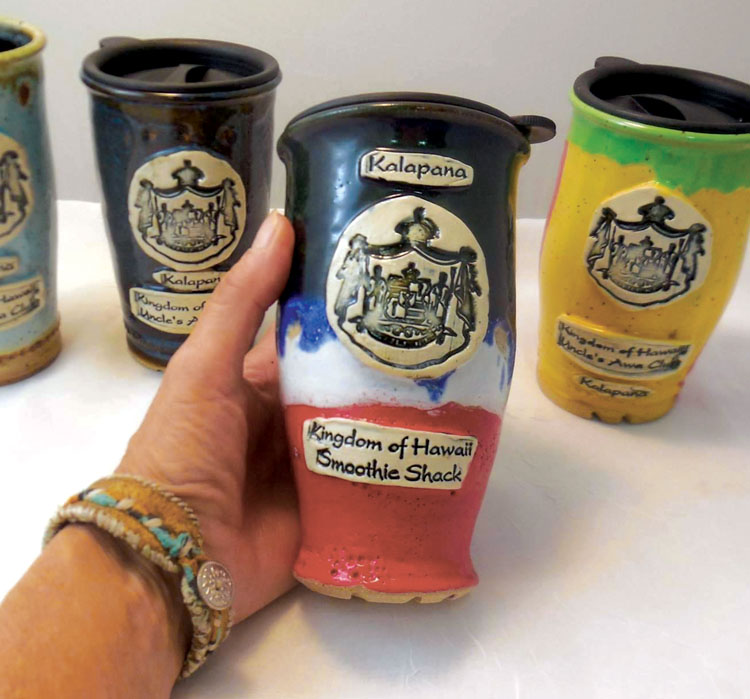
The project was the brainchild of Rika and Sam Keli‘iho‘omalu, one of Uncle Robert’s sons. In the past, Uncle Sam, as he’s affectionately called, had commissioned Rika to create cups, bowls, plates, and even ashtrays featuring the Kingdom’s royal crest as souvenirs for the thousands of annual visitors who’d come from all over the world to experience the raucous Wednesday night farmers’ market and kanakapila (live Hawaiian music).
“We merchandized them over here on top of our counters, and they sold,” Sam says about Rika’s handiworks, which were displayed most prominently at the market’s smoothie shack. “People come here and they look at them, and they say, ‘Wow, we want that! That souvenir of Uncle’s place, it’s one-of-a-kind.’ Guaranteed it’s one-of-a-kind, ‘cuz nobody in the world has it. And then every item, everything she made was a little different; none of them are the same ‘cuz they’re handmade.”
Sam had been wanting to upgrade the market’s signage for some time, and when Rika informed him such a large project was possible, he was eagerly on-board. She spent many months working mostly alone, making small progress day-by-day, unperplexed by the sheer scale of the project or the intricate detail of carving which it called for.
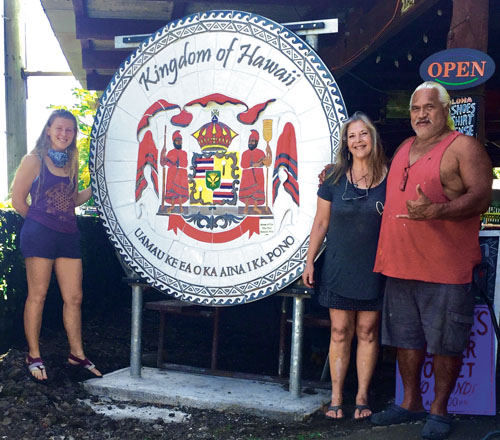
Her daughter and fellow craftswoman, Hannah Blue, helped with forming and cutting border tiles, along with glazing the nearly 100 separate pieces during the final phase. Hannah’s name adorns the mural’s signature tile along with her mom’s. The work was slow-going—a labor of love, and it became a commission unlike any other the veteran potter and ceramicist has received in her more than two decades spent working with clay.
For the artwork’s patron, it was about more than just signage, too. Sam comes from a native Hawaiian family and community, and for him displaying the Kingdom’s royal crest in such a prominent way at the village hub keeps alive the legacy of who he and his peers see as the enduring, legitimate ruler of these islands.
“I believe in the independence of the Kingdom of Hawai‘i,” Sam says. “We have to show that we are the Kingdom, that we believe in our kingdom—in our independence—because it’s for real; it’s here. The United States acts like [our kingdom] isn’t here, but really it is. So, in my heart and in my thoughts and my spirit and my belief, we’re still living in sovereignty in our own way. That’s why we did that crest, because we are the natural people of the ‘āina [land] out here, so we got to stick with it as strong as we can, and to have the world—to have communities—recognize it. We have to try to stay strong in our kingdom, in our ways, in our heritage, in our culture.”
History of the Crest
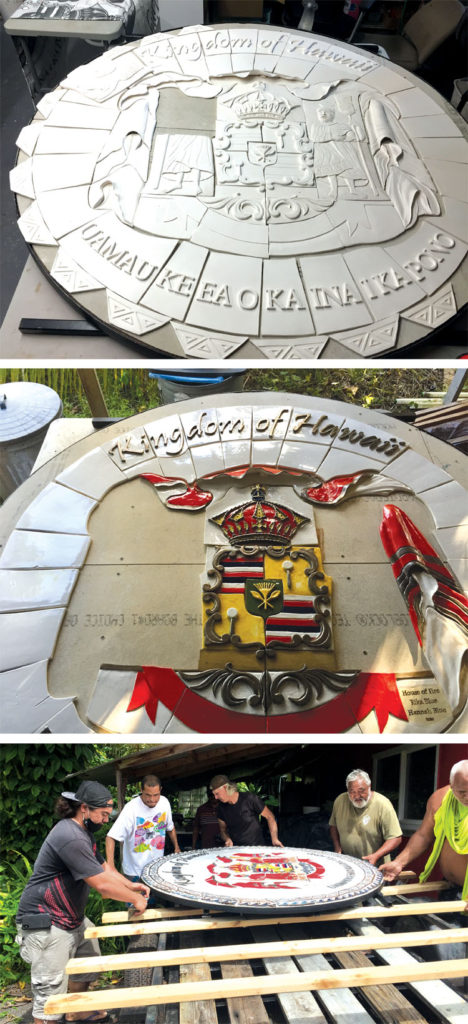
Hawai‘iʻs royal crest originated during the reign of Kauikeaouli, Kamehameha III, when in 1842 the monarch sent his private secretary to London to submit a design for a royal coat of arms to the city’s College of Arms. The resulting image was adjusted slightly by 1850, and then became widely used as a symbol of the monarchy, including on coins minted by the Hawaiian Kingdom.
US imperialism violently overthrew the monarchy at the end of the 19th century, and the crest was changed significantly, with most of the symbols of the Kingdom removed or replaced, to become what is today the Great Seal of the State of Hawai‘i. Therefore, native Hawaiian sovereignty activists like Sam and many others in the Kalapana community hold the original royal crest in high regard as a powerful, symbolic representation of their heritage—of the memory of Hawai‘i’s old ways, which is kept visible through the labors of artists like Rika.
“It gives me goosebumps,” the ceramicist says when she’s asked about what the mural means to Hawaiians living in Kalapana. “That was the whole point of making it—to have that for them—to bring them that honor which I felt they deserved. I wanted them to be proud, and I thought this was something that could give them great pride when they see it.”
The piece is large enough for passersby to get up close to the crest and study it in ways only possible at this scale; the shield at center with its two quadrants of white, red, and blue stripes representing the Hawaiian flag and the Kingdom’s eight inhabited islands, while the other two quadrants depict pūlo‘ulo‘u, sometimes referred to in English as “kapu sticks,” which are cloth-covered balls filled with relics fashioned atop wooden sticks and carried in a chief’s procession as royal insignia. In the middle of the shield, against a green background, are crossed spears and a triangular banner representing a puela—a thin strip of kapa cloth flown above the sails of a chief’s canoe to mark its royal status.
An elegant, bejeweled crown symbolizing the monarchy, trimmed with golden leaves of the taro plant—the traditional Hawaiian staple crop—rests above the shield. To its left and right are the royal twin brothers Kame‘eiamoku and Kamanawa, contemporaries of Kamehameha I, dressed in feathered cloaks and helmets, one holding a spear and the other a feathered kahili, another symbol of the ali‘i, or royalty.
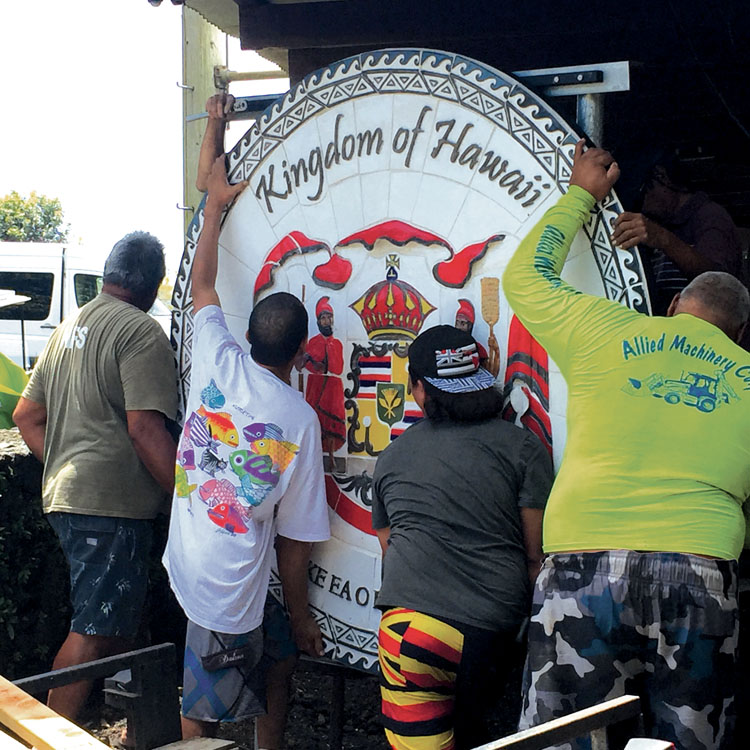
On the traditional royal crest, the famous phrase “Ua mau ke ea o ka ‘āina i ka pono” (“The life/sovereignty of the land is preserved in righteousness”), known in modern times as the Hawai‘i State Motto, is written on the banner that drapes across the bottom under the chiefs’ feet. Rika adjusted this with her mural, opting to feature the motto in large text that wraps around the lower hemisphere, since the inscription would be too small to read from a distance if she’d been forced to shrink its font enough to fit in the banner. She added her own touch in other places, too, like the mountain and ocean wave border that encircles the disk.
Rika moved back to her home state of Montana to care for her elderly parents shortly after the mural was unveiled, making it the final act of the nearly six-year story of her life in East Hawai‘i. Although the Uncle Robert’s clan technically commissioned the piece, she still sees it largely as a gift: a token of appreciation for a community that showed her such aloha while she lived within it, a labor of love that honors and renews Hawai‘iʻs old ways in the hearts and spirits of people like Sam, and, in a way, a farewell present unlike any other. ❖
For more information: facebook.com/Uncles-Awa-Club
